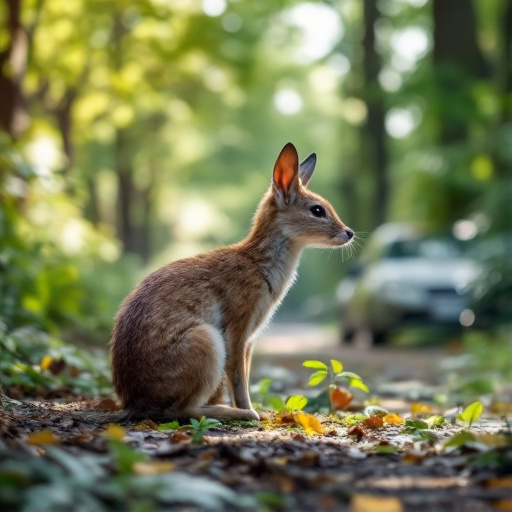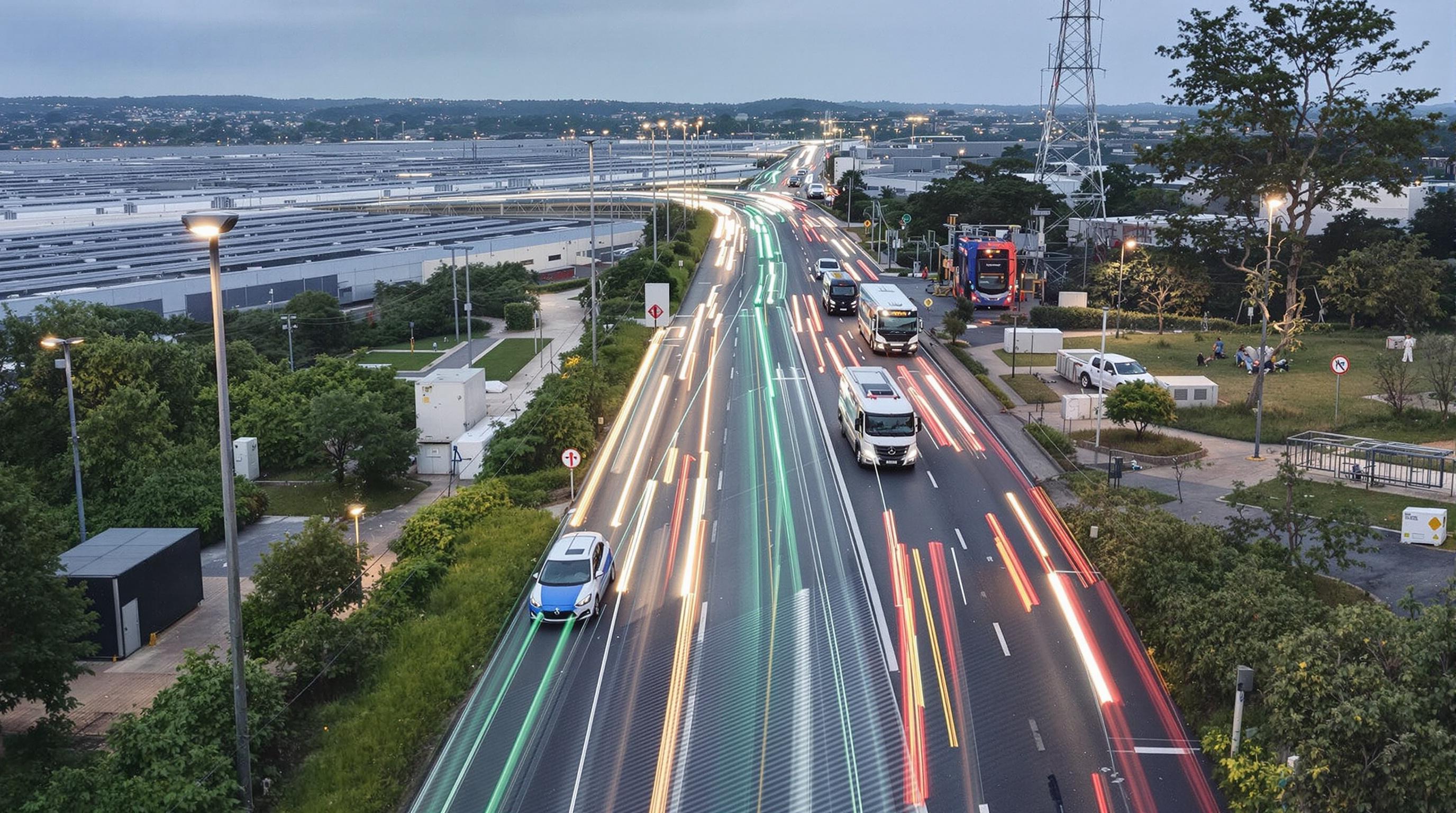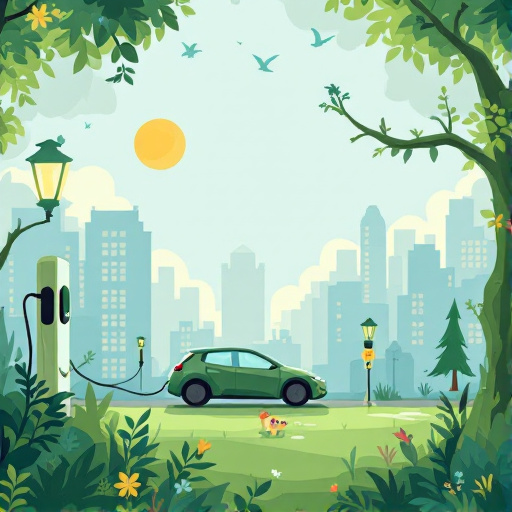Related Articles
- Charged Up! How Electric Vehicles are Reshaping Urban Wildlife Habitats and Biodiversity
- Navigating the Used Car Market: Uncovering the Secrets of 'As-Is' Sales for Savvy Buyers
- The Rise of Electric Car Pop-up Shops: A New Frontier for Urban Retail Experiences
- The Forgotten Art of DIY Car Maintenance: Rediscovering Skills in a Tech-Driven World
- Electric vs. Vintage: The Battle for Enthusiasts' Hearts in the Age of Latest Car Models
- The Rise of the 'Car Review Influencer': How Social Media is Shaping Auto Buying Decisions
The Surprising Role of Electric Vehicles in Urban Wildlife Conservation: A Path to Greener Cities
The Surprising Role of Electric Vehicles in Urban Wildlife Conservation: A Path to Greener Cities
The intersection of electric vehicles (EVs) and urban wildlife conservation is a burgeoning field of interest that presents a dual opportunity: promoting sustainability in cities while protecting animal habitats. This article explores how electric vehicles contribute to greener urban environments and offer surprising benefits to wildlife preservation.
The Electric Vehicle Boom
Electric vehicles are not just a passing trend—they are becoming a pivotal part of modern urban transport. According to the International Energy Agency, the sale of electric cars reached approximately 6.6 million units in 2021, representing a 108% increase from the previous year. This surge indicates a significant shift towards greener alternatives in urban areas. But what does this mean for wildlife?
Less Noise, More Wildlife
Ever been in a bustling city where the honking of cars and roar of engines drown out the sounds of nature? Conventional vehicles often give off nausea-inducing noise pollution that both irritates humans and contributes to stress among wildlife. A study published by the journal *Biological Conservation* revealed that areas with decreased vehicular noise saw an increase in the activity of birds, bees, and other crucial pollinators, indicating that reducing noise via EVs could open ecological doors that were previously slammed shut.
A Surprisingly Gentle Approach to Urban Layout
Let's talk roads. Urban planning has historically favored the car, creating wide roads loaded with pollution and barriers that disrupt wildlife. However, as cities adopt electric vehicles, there's a shift towards greener infrastructures like bike lanes and shared spaces, reducing the overall need for bulky road networks. In cities like Amsterdam and Copenhagen, transitioning to EVs has facilitated a reimagining of urban spaces that prioritize pedestrian and cyclist routes—creating less fragmented ecosystems and allowing urban wildlife to thrive.
Statistics that Matter
According to a 2020 study by the *American Psychological Association*, exposure to natural environments can improve mental health and reduce stress. This finding underscores how revitalizing urban habitats can support both human and animal life. This connection becomes particularly poignant as cities embrace electric vehicles, encouraging greener infrastructures that invite wildlife back into urban settings.
Rewilding Urban Spaces
As cities become more conscious of their ecological footprints, a trend known as "rewilding" is gaining traction. EVs facilitate access to areas that were previously regarded as no-go zones due to pollution and traffic. Urban planners can leverage the reduced footprint of these vehicles to restore green spaces, parks, and wildlife corridors. For instance, Los Angeles has adjusted its zoning laws to incorporate more green spaces, leveraging technologies such as EV charging stations to power serene parks rather than cluttering them with gas stations.
Case Studies: Success Stories of EV and Wildlife Harmony
Take the town of Freiburg, Germany, for example. Known as the “Green City,” Freiburg incorporated EVs into their public transportation system, alongside extensive bike paths and pedestrian areas. Wildlife populations in surrounding areas have rebounded, with increased sightings of rare species such as the European Nightjar and the Green Woodpecker. The integration of sustainable transport doesn’t just benefit humans; it positively impacts native species, proving the potential for holistic urban planning.
Charging Ahead with Nature Conservation
But how do EVs help beyond just their reduced emissions? Being electric means they can also be ‘charged’ with renewable energy—think solar, wind, or hydroelectric power. This synergy not only addresses urban transportation needs but also contributes to the wider fight against climate change, which has been exacerbating habitat loss. For example, California’s new push for solar-panelled parking lots means that as we charge our EVs, we’re also creating habitats for birds at the same time. Now, that’s what I call killing two birds with one stone, literally!
The Economic Argument: Saving Wildlife Saves Money
Now let’s get down to brass tacks. Saving wildlife doesn’t just save the fluffier creatures among us; it saves money too. The World Wildlife Fund estimates that every dollar invested in habitat restoration can yield up to 4-6 times in economic benefits, like increased tourism and health benefits from cleaner air. When we create sustainable cities with electric vehicles, we are not only saving the environment but also investing in our economy. Investing in EV infrastructure could save cities money in the long run through decreased health-related costs due to pollution.
The Human Element: Why We Should Care
As urban dwellers, it’s crucial to understand our role within this ecological equation. Electric vehicles are not just a tool for reducing personal carbon footprints; they also represent a cultural shift towards prioritizing wildlife and natural ecosystems. As our urban environments become increasingly intertwined with technology and infrastructure, our choices reflect our values. Facilitating a flourishing wildlife population amidst urban landscapes can lead to healthier cities, vibrant communities, and an enriched quality of life.
Bridging the Gap: The Role of Education
We can’t expect to drive change without engaging minds first. Educating communities about the implications of EVs on wildlife conservation is essential. Workshops, community clean-ups, and social media campaigns can bridge the gap between urban living and wildlife needs. Picture a world where young people advocate for green transport alternatives, inspire their peers to use EVs, and celebrate their city's biodiversity. This grassroots approach empowers individuals, creating an engaging dialogue about their role in wildlife conservation.
The Challenges Ahead
Despite the benefits, the path to fully integrating electric vehicles into urban wildlife conservation isn't entirely smooth. Challenges such as funding for infrastructure, resistance to change from traditional car-centric mindsets, and ongoing habitat destruction need to be addressed. For these initiatives to be effective, it may require pushing back against entrenched interests that were built around fossil fuels. However, numerous cities worldwide are already pioneering initiatives that attempt to balance these concerns.
From Dreams to Reality: The Road Ahead
With polls indicating that over 70% of people are willing to pay more for electric vehicles and products that support sustainability, there is a hopeful future on the horizon. If cities foster environments where electric vehicles can take root, we will not only safeguard our wildlife but also secure a future that honors the delicate balance of nature in urban areas. By staying committed to achievable targets—whether a collective push for EV adoption, the creation of more urban green spaces, or educational initiatives—we can dream big and make a difference.
Conclusion: A Call to Action
The backroads of our cities may not be as wild as they used to be, but electric vehicles could pave the way for a more harmonious coexistence between humans and wildlife. As we shift towards greener urban landscapes, let’s remember that the choices we make today will echo in the cities of tomorrow. Whether it's supporting electric vehicle initiatives, promoting rewilding projects, or advocating for sustainable practices, every action counts. The time is now to embrace the surprising role electric vehicles can play in urban wildlife conservation and, ultimately, in shaping the world we want to live in.




